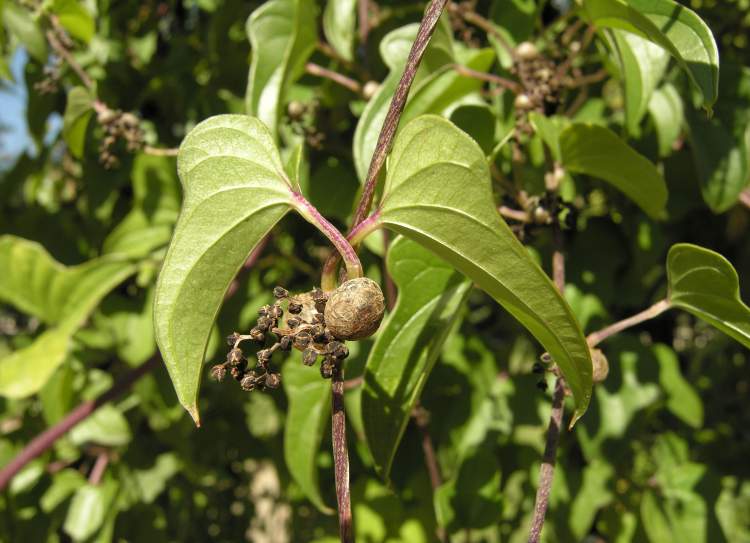Dioscorea
|
This is a group of tropical and subtropical vines that can be grown for ornament as well as a food crop.
Winged Yam (D. alata) - Greater Yam or White Manila Yam. The Winged Yam has been cultivated for centuries as a basic food source for starch in many cultures. This vegetable isn't as popular in the U.S. as it is in tropical countries, however, the plant has been appearing on the Gulf Coast and southwestern states more and more. The foliage resembles the leaves of the Sweet Potato and Philodendron. The long tubers may be white- or purple-skinned. Their eventual size depends on the variety and care they are given; tubers that weigh 100 pounds are possible.
Chinese Yam (D. batatas)- This plant is also called the Cinnamon Vine. This plant grows quickly and will survive the winter in the Deep South and warm West. It can handle cooler weather than the Winged Yam. The shoots are covered with shiny green, cordate leaves. Late in the summer, racemes of tiny, fragrant, greenish-white flowers, which aren't any larger than a pin's head, are produced abundantly. Its edible tubers are seen in Japanese and Chinese grocery stores and may weigh from 5 to 10 pounds. They are usually flattened, or fan-shaped and some are club-shaped. Pot CultivationThese tubers need a nearly frost-free climate and heavy rainfall or irrigation. They need 6 to 12 months of warm soil to develop. Yams don't like heavy, saturated soil; they prefer rich, light soil. Make strong arches of wire or thin bamboo canes and cover with slitted plastic. Remove the plastic in mid-summer or at the first sign of the leaves burning. They should be provided with some kind of support to climb, such as bamboo tepees. Feed them once in a while with manure. These tubers don't store well, so they should be left in the ground as long as possible. The tubers should be dug up before frost or, in nearly frost-free climates, in late winter. Store them in a cool place with a temperature no lower than 45 degrees. Make sure that you cook the Yams completely. Although modern cultivars are said to be free of the poison dioscorine, the possibility of genetic reversion is still there. Cooking will destroy the poison. PropagationYams are propagated by tubers. These can be bought in Asiatic stores. In early spring, divide the tubers into wedges, each having 2 or 3 buds. Allow the pieces to dry for a day and then place each on the surface of sand in an 8-inch pot. Sprinkle each piece with sand until nearly covered and place in an area with a 75- to 85-degree temperature until they've formed a good root system. Florescent lights along with incandescent should be supplied; this will provide enough light and warmth to encourage the formation of roots. The pieces are set out, 3 weeks after the frost-free date, on large piles of rooted compost mixed with sandy soil, 1 to 2 feet high. They should be set 2 to 3 feet apart.
VarietiesD. batatas; |





